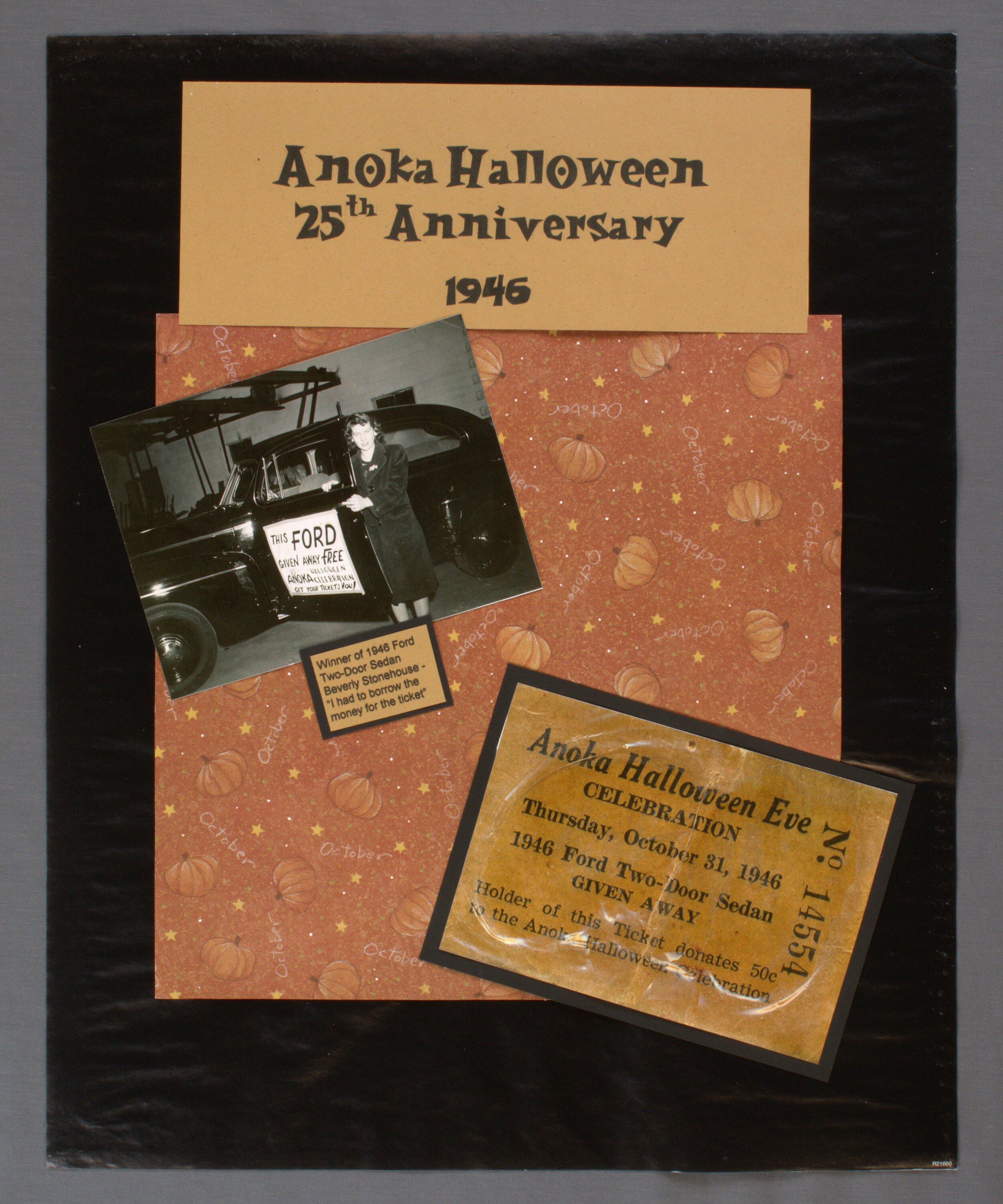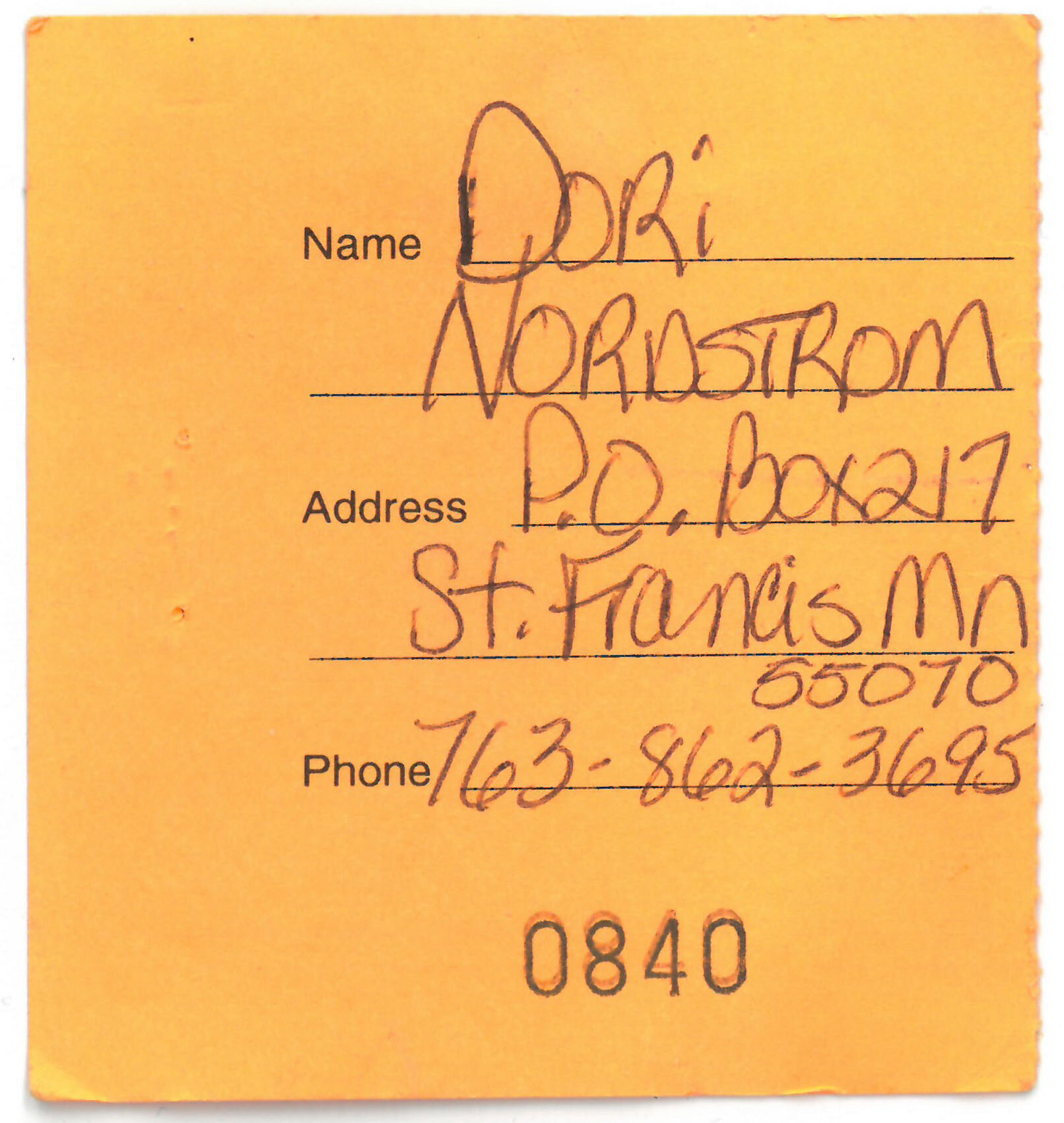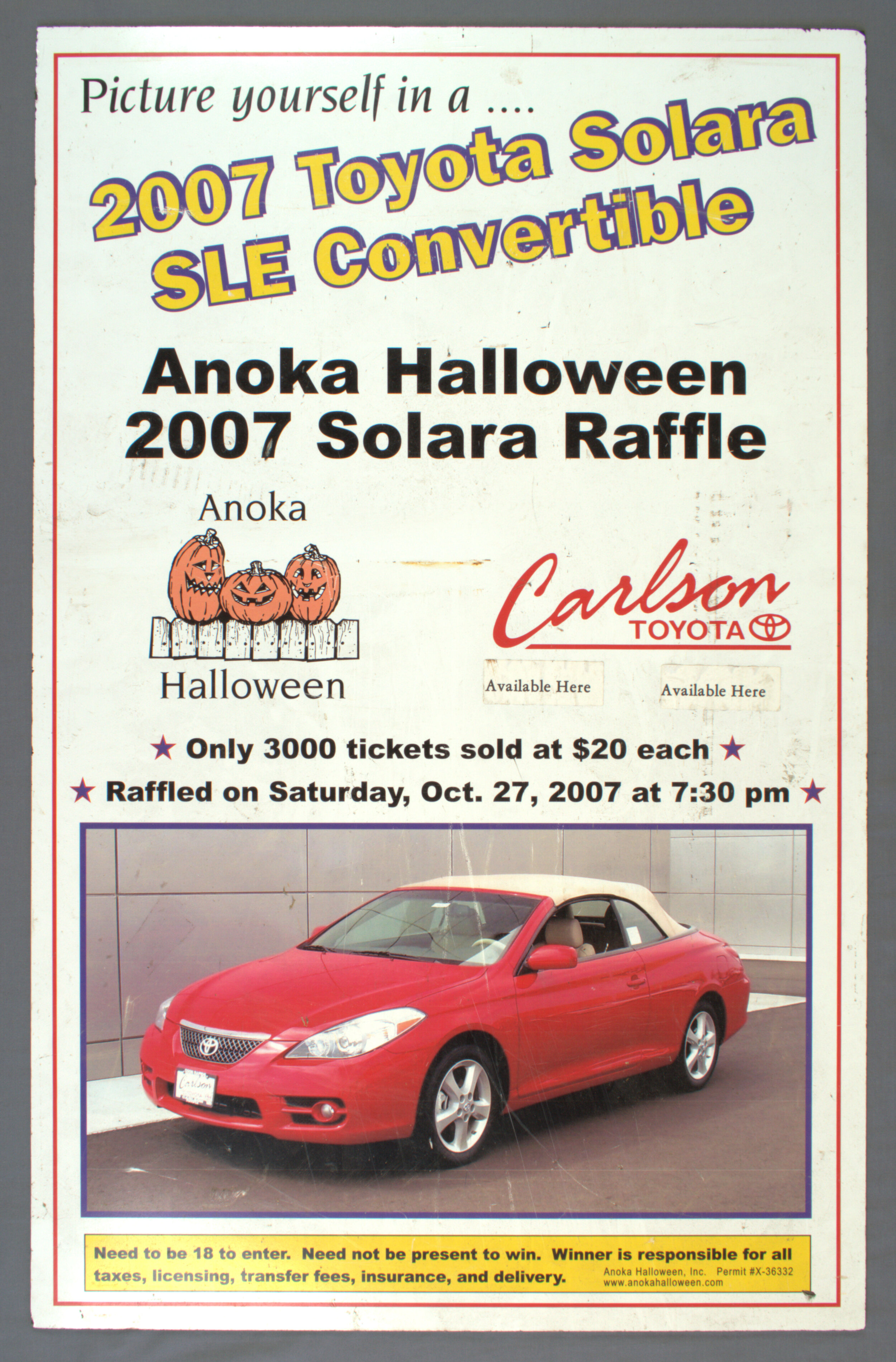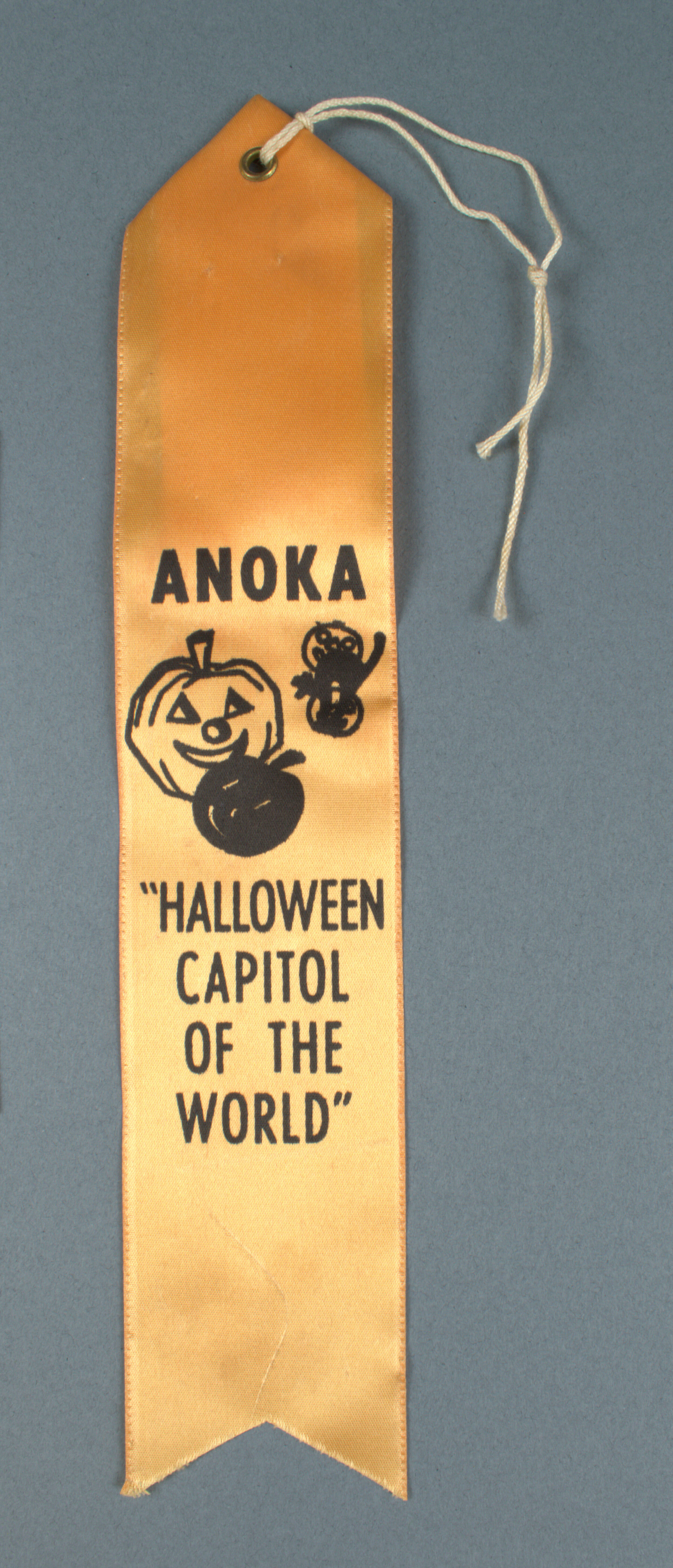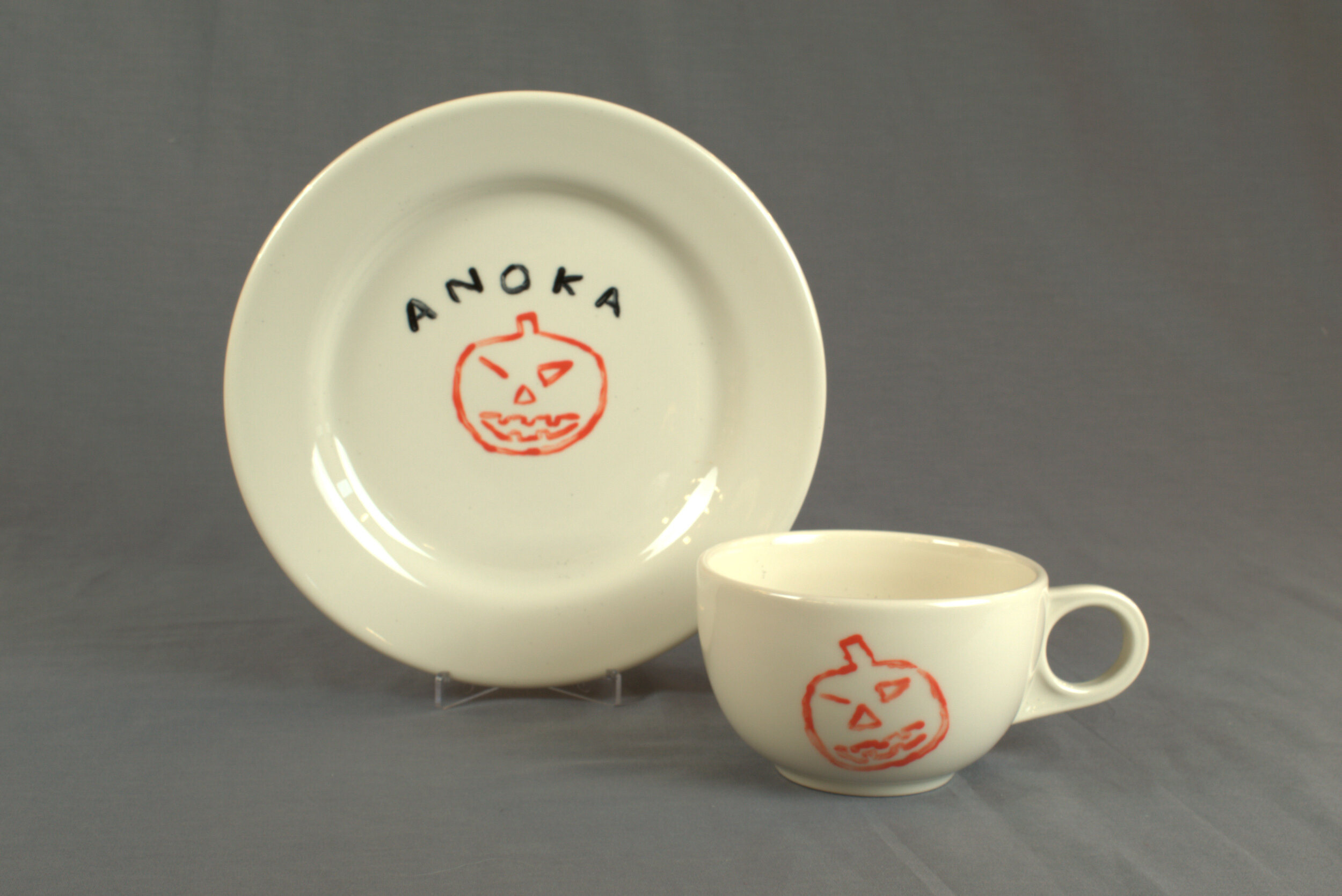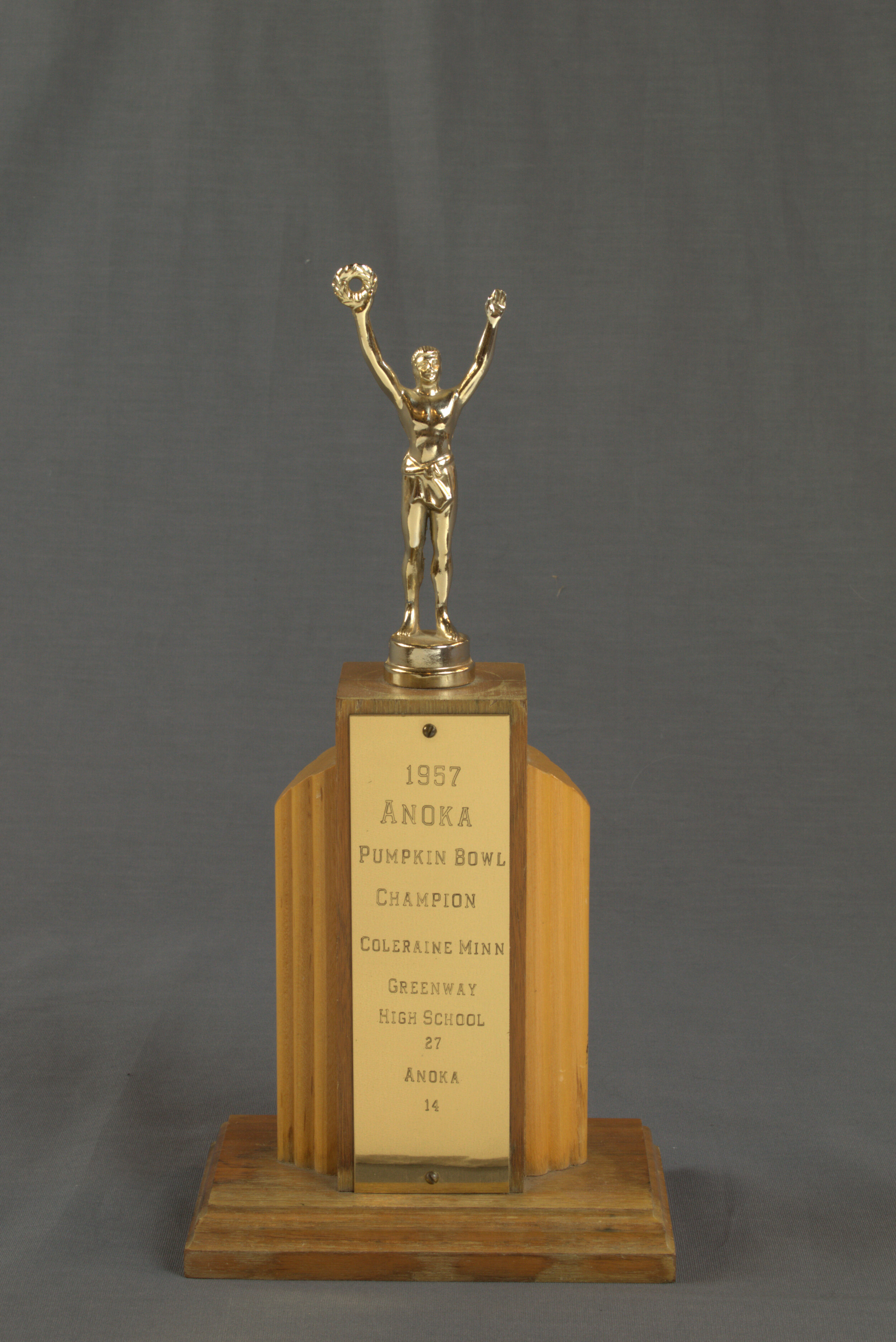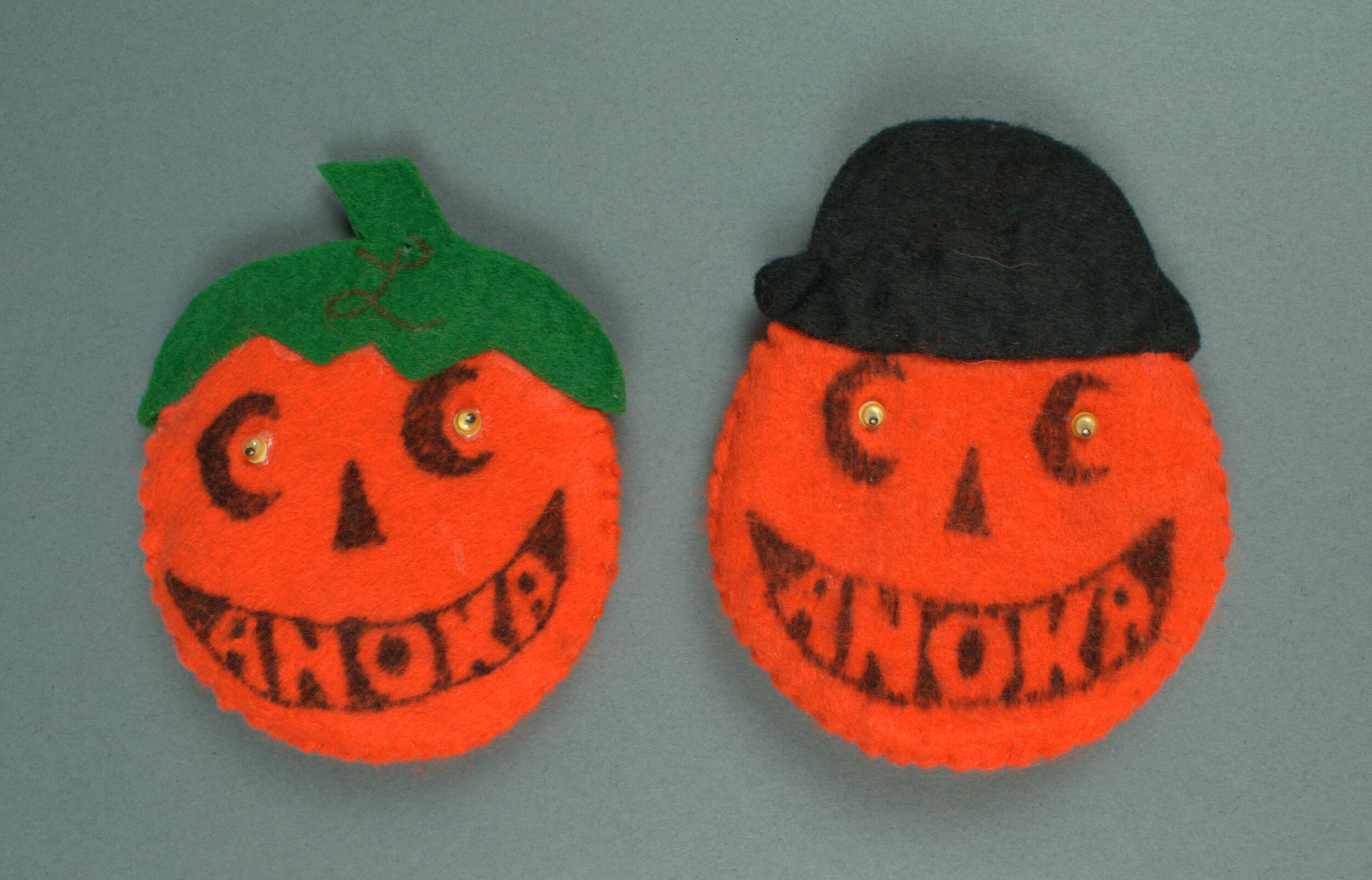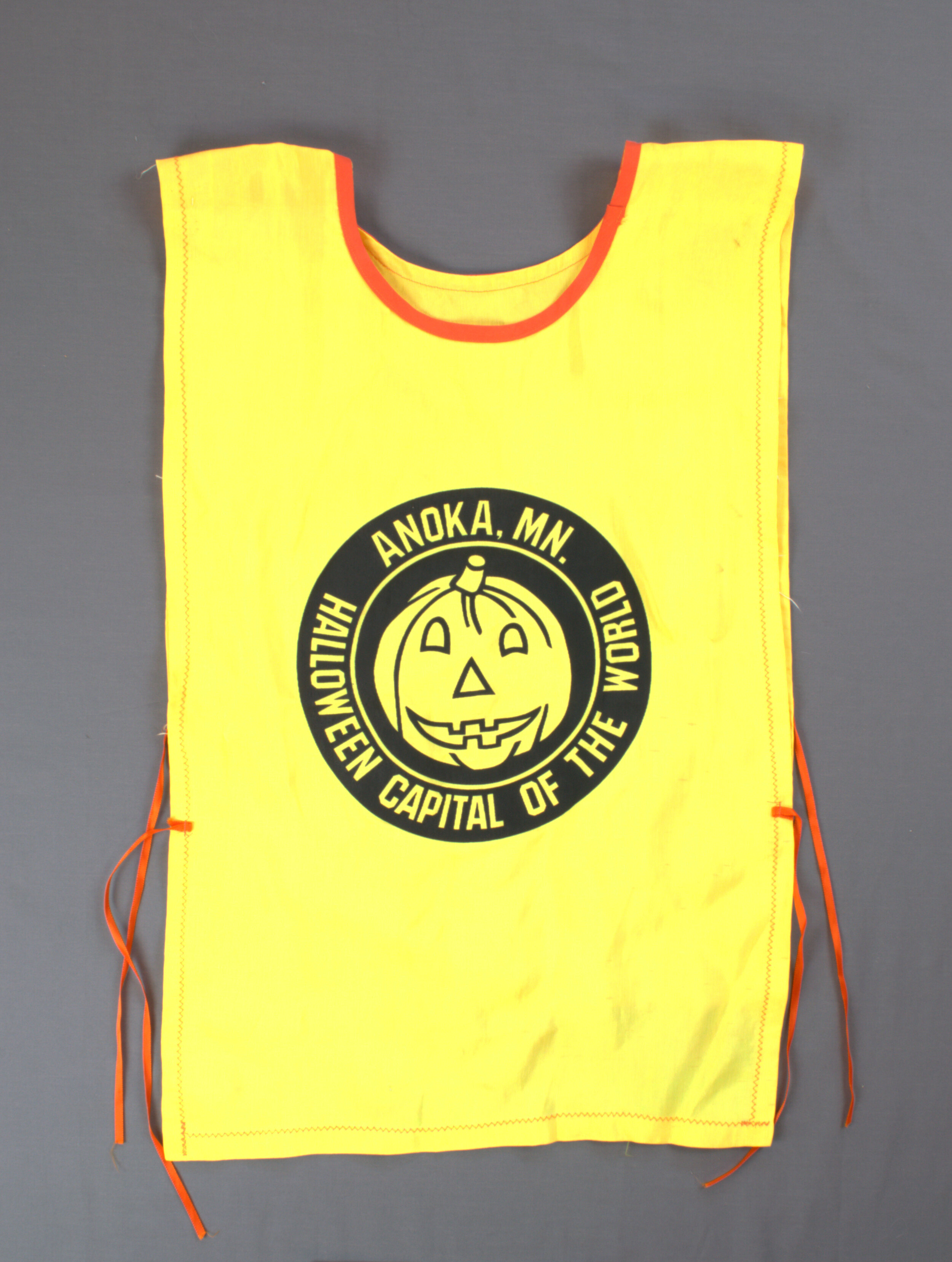Anoka Halloween: 100 Years of Family Fun
Object ID 2019.0846.032
anoka princess crown worn by karen george
1979 – 1980
Karen was chosen as one of three Anoka Halloween royalty in the fall of 1979, and wore this crown at the many events she attended during the following year. It is a rhinestone crown with varying sizes of rhinestone that rises to a point at the front, standing 2.5 inches high in the middle. Two metal combs were attached, one at the back of each end of the crown's band, but both have since come off; glue residue remains on both the combs and the crown band.
Object ID 1990.0000.005
Anoka halloween capital of the world button
1941 Anoka Halloween wooden pinback button, painted orange with black and white owl and bats.
Object ID 2062.1.20
halloween parade, anoka, 1953
Horse-drawn carriage or buggy. The 3R Ranch, children in cowboy hats.
Pat Minor Anoka Halloween Collection
Although we have many Anoka Halloween artifacts at the museum, we don’t have everything! A long-time member of Anoka Halloween and an avid collector of related memorabilia, Pat Minor was excited to help make this year’s 100th Anniversary exhibit stand out. He generously loaned the items you see below from his personal collection. Enjoy these additional Anoka Halloween artifacts—many of them one-of-a-kind!
The Anoka County Historical Society would like to thank Pat Minor for the loan of all the items you see here.
In 1920, the city of Anoka started an official celebration of Halloween.
Led by local businessman George Green, who owned a theater on Main Street, others in town contributed their efforts to organize a parade and other festivities.
Tradition and some newspaper accounts suggest that regular mischief by local children and teens on Halloween night was the main reason for this decision. It was hoped that by having official Halloween celebrations to put their energy into, the mischief-makers would be diverted. The continuing annual celebrations and at least one newspaper account indicate that the diversion was largely successful. With such a fun annual festival in place, the people of Anoka saw no reason to stop.
Themed buttons have been a part of fundraising for the Halloween celebration since 1940, when the first button was created.
In that year, the Halloween Committee created round wooden buttons painted orange, with the words “Halloween Capitol Anoka” in white around the edge, and the black silhouette of a witch flying on the broomstick in the middle. A safety pin was glued onto the back so that it could be worn.
The witch’s design was based on the Halloween logo design commissioned by Anoka drug store owner Bernard J. Witte a few years earlier in the late 1930s. The design was created by local artist Alyce Rau-Vick, and was subsequently used for many Anoka Halloween related items, including large sidewalk medallions, buttons, and more.
In their first year, the buttons were sold for ten cents each (having cost the Halloween Committee six cents each to make). The Anoka Union newspaper reported that 500 had already been sold by October 16, 1940, and ultimately 1,107 buttons were sold that year.
A new design, featuring an owl (see above), was chosen for the 1941 buttons. This was the first year that the Halloween Committee ran a contest for the button design, which Mrs. Les Brown won. Button prices increased to 25 cents that year, and 1,400 were sold.
Due to World War II, there were no official Halloween celebrations in 1942 and 1943.
By late 1944, however, the United States and Allied nations were more clearly on the road to victory, and an official celebration was held again in Anoka that year, under the auspices of the new Junior Association of Commerce (Jaycees). A button was sold that year, but it is not described anywhere. Today, the Anoka Area Chamber of Commerce identifies it as being identical to the 1940 button, so it is possible that the first design was reused for ease that year.
In 1945, a paper tag with a string to hang it with was sold in place of a button, and the Anoka Area Chamber of Commerce has the only known remaining example of this tag.
The first year to feature a conventional pinback button as we think of them today was 1946, which was celebrated as the 25th Anniversary of Anoka Halloween. The evidence that we have indicates that no buttons were sold in 1947 or 1948.
Beginning in 1949, buttons were sold annually. The Anoka High School football team played a regularly scheduled home game in 1948 that happened to fall on Halloween. Starting the following year, the 1948 was retroactively dubbed the first annual Pumpkin Bowl, and beginning in 1949 the buttons were sold as a fundraiser for Anoka Halloween, but served as a free admission to the Pumpkin Bowl game. For this reason, the 1949 and 1950 buttons feature an oval, football shape, with black and orange designs.
The design returned to round buttons in 1951, but overall designs did not change much for the next two and half decades due to the connection with the Pumpkin Bowl. Always orange and black, the buttons feature a limited variety of designs (the witch silhouette, football players, and football players with jack-o’-lantern heads), with some designs being reused over multiple years. In 1954 and 1965, the buttons feature the date of “October 32nd,” as a way to keep in the Halloween spirit when the scheduled game fell on November 1st.
The 1975 button broke away from the previous all-orange-and-black pattern with a yellow background, but it was also the last Halloween button sold as admission to the Pumpkin Bowl. After that year, it was determined that legal issues prevented the school district from providing button sale money to Anoka Halloween, so the direct connection was ended. The Pumpkin Bowl football game continues to be a scheduled part of Anoka Halloween festivities. In 1976, the button features the phrase “Keep the Pumpkin”, which may have been a protest against the district’s decision.
Button designs began to vary more widely once they were no longer serving as admission to the football game. The Halloween Committee returned to the 1941 practice of holding a contest for the button design, which continues to the present.
Anoka Halloween Parade Highlights
1920 - An evening parade is part of the first annual celebration.
1930s - Night parades are the main event, held on Halloween night whenever possible.
1942-1943 - No parades were held due to WWII.
1947 - A separate, afternoon parade was created for the school children to march in costume, a change made to handle the growing number of participants. The usual evening parade was still held on the same day.
1950s - Many Hollywood celebrity guests, including Smiley Burnett, Rex Allen, and Tex Ritter, attend the parades.
1968 - The evening parade was changed to a daytime Saturday afternoon event called the Grande Day Parade.
1970 - It was estimated that 30,000 people attended the Grande Day Parade.
2002 - The first year of the Light Up the Night Parade reinstated the original tradition of an evening or night time parade. This was the first year that three separate Halloween parades were held in October, including the evening parade, the Big Parade of Little People (children’s parade), and the Grande Day Parade.
2000s and on - Three annual parades become the tradition. Attendance at the Grande Day Parade regularly exceeds 60,000 attendees.
Click here to see more parade and other Halloween photographs!
Information provided on this page comes from sources at the Anoka County Historical Society, and the Anoka Halloween 100th Anniversary book.
This page is under construction and will receive continual updates as new stories and artifacts arrive at ACHS.




